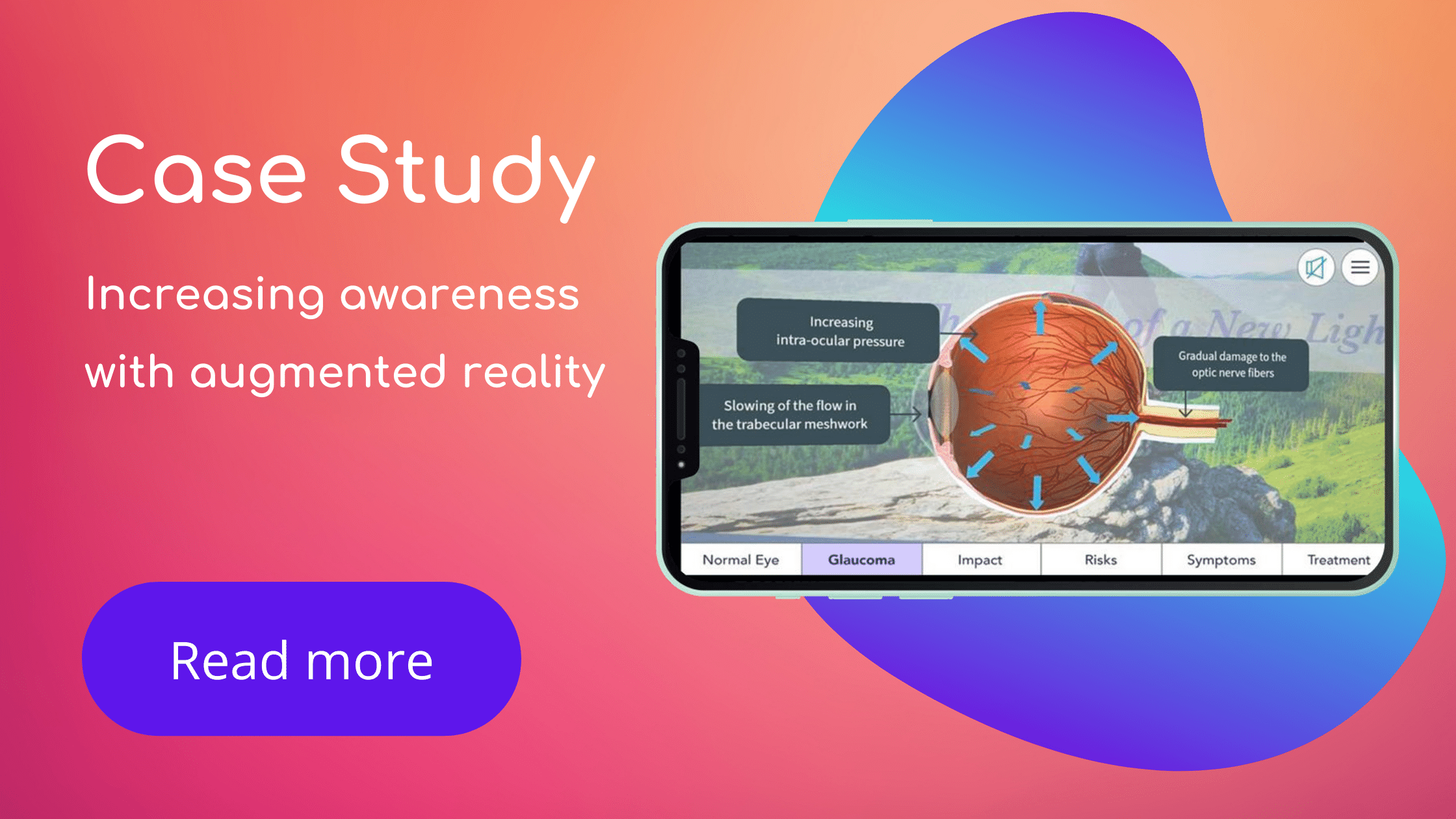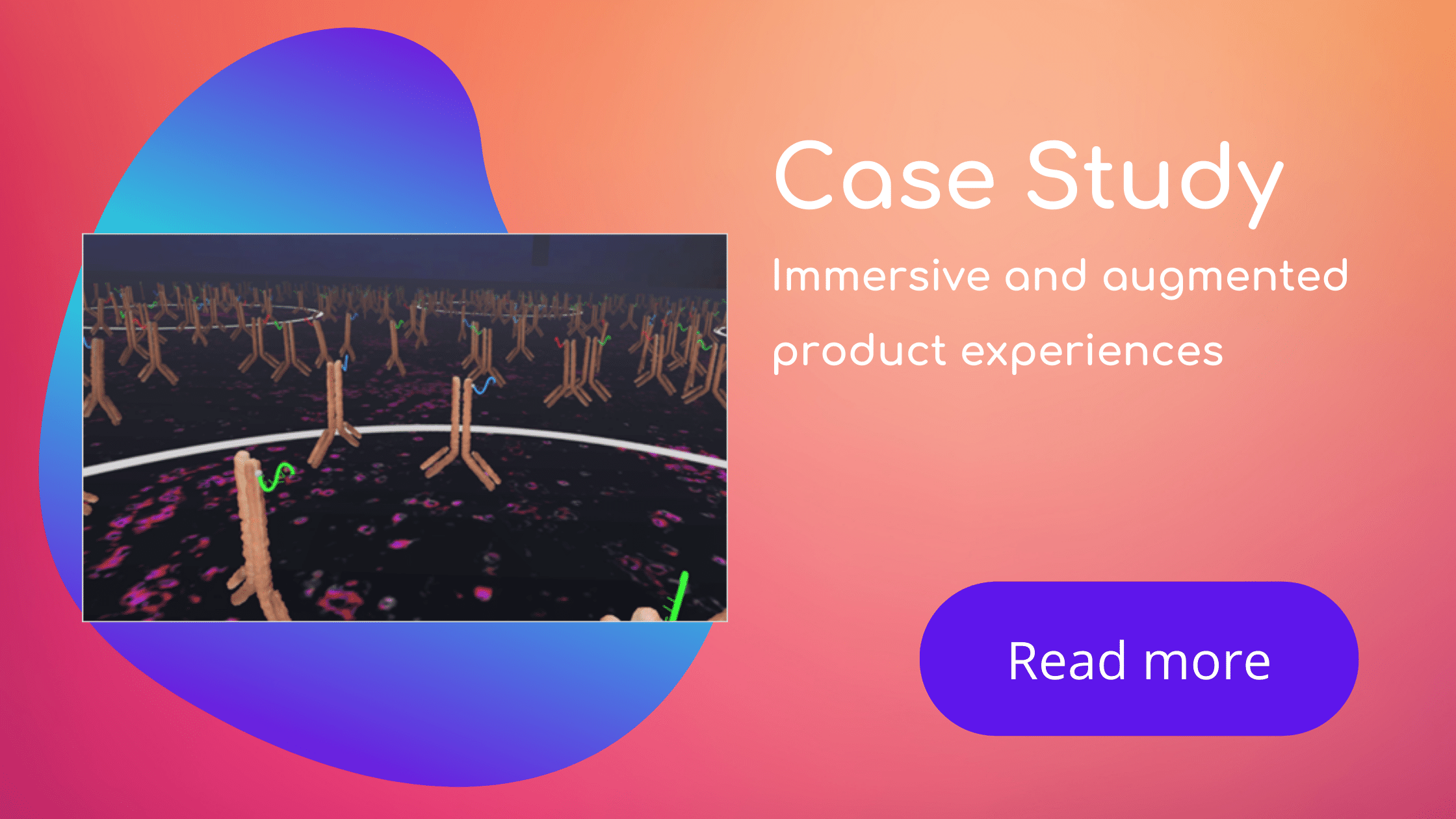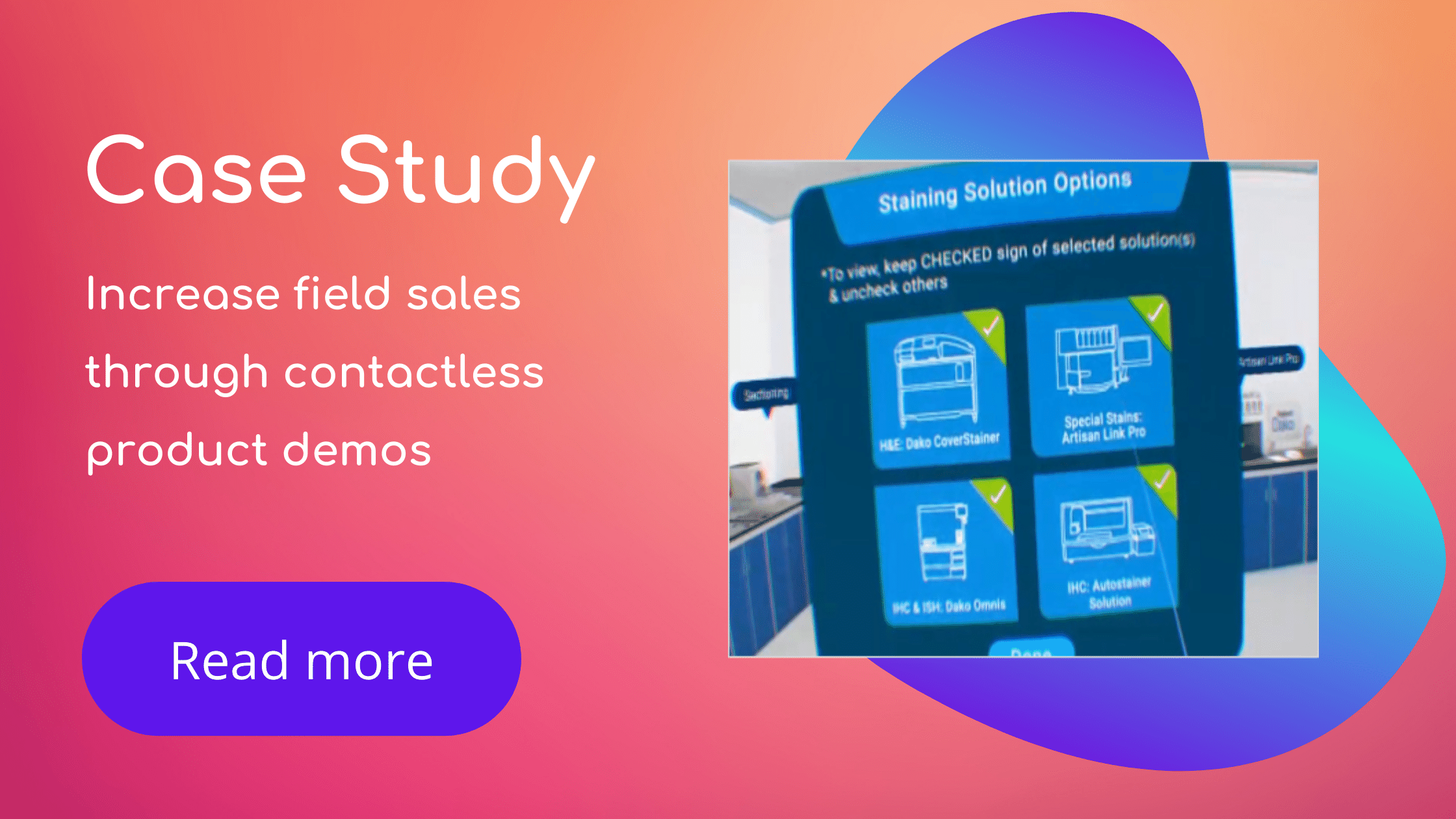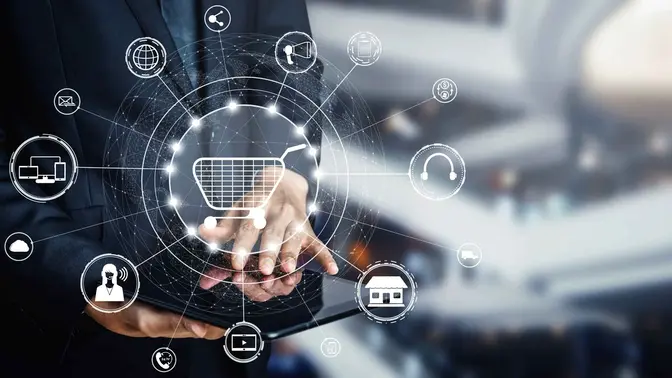How immersive technology can impact the sales scenario
Currently, one name, i.e., 'Immersive Technology' consisting of Augmented Reality and Virtual Reality, is at the forefront of the marketing landscape. And experiential marketing is rising up the charts. AR and VR-based solutions offer exciting potential to optimize customer experiences. Implementing these technologies can help brands increase their ROI from their marketing efforts, strengthen brand loyalty, increase visibility, and promote engagement among consumers. AR and VR have provided the sales and marketing team with a definitive way of achieving customer engagement.
With the boom of immersive technologies, traditional sales and marketing techniques have been questioned. The two industries are being reimagined from the ground up to provide a more realistic customer experience. In this article, we will discuss the following aspects:
What is immersive technology and its benefits?
Customers are increasingly looking for personalized brand experiences. This means that marketers need to collect detailed information to learn more about their target customers. Adapting advanced systems such as AI-based presentations and immersive technologies can help collect accurate data to improve offerings and customer experience. AR and VR are two fundamental types of immersive technologies. And each of them is loaded with benefits that help flourish the business.
1. Augmented Reality
Augmented Reality (AR) creates a layout of virtual content that not only allows users to interact with a 3-D environment but also mixes VR by creating virtual objects that can interact with the real world and generate interest among customers.
Benefits
- Boosting sales and brand equity
- Simplify consumer decision making
- Increase customer engagement
- Creates an emotional experience
- Gives a clear understanding of the product/service
2. Virtual Reality
Virtual Reality creates a 360-degree consumer experience that allows prospective consumers to interact and experience the product and service. The detailed audio and visual experience are highly informative and engaging, creating a lasting impression on the consumers.
Benefits
- Creation of sales training experience by simulations and training modules in a risk-free environment
- Presenting products in an innovative way which helps in educating prospective customers
- Reduce Sales Cycle which allows corporations to save money and convert customers quickly
How effective is immersive technology in enabling sales?
In a Deloitte tech survey report(1), 42% of companies use virtual demos or interactive tools to help improve employee and customer interactions with their products and services.
Deloitte report also stated that 40% use the technologies to train their customers to use medical devices or scenarios such as hazardous materials.
And, 38 % have found ways to use virtual Reality to bring immersive experiences such as gaming scenarios to enable customers to engage with their brands.
Using 3D technologies in the online shopping experience can increase conversion rates by up to 40%. Using AR can give customers the confidence to buy, increase their post-purchase satisfaction, and reduce return rates. [Threekit](2)
As per Invespcro(3), 45% of online shoppers find that AR helps them save time to make purchase decisions.
Training simulations are expected to be a significant application of immersive technologies in the healthcare sector within the next two years, according to 68 percent of XR industry experts who responded to the 2020 survey.(4)
As per Statistica(5), the commercial use cases for Augmented and Virtual Reality (AR/VR) that are expected to receive a huge chunk of investment in 2024 are training and industrial maintenance, with 4.1 billion U.S. dollars forecast to be invested in both fields.
Lumusvision report(6) states that by 2025, Healthcare revenue from AR/VR is expected to rise to $5.1 million. And 24% of technology insiders expect to see the most AR/VR technology advancements in healthcare or medical devices. 
How does immersive technology enhance the customer experience to purchase the product/service?
To understand this further, we will take an example of how Eye Care Super Speciality Hospitals managed to get their hands on a new ocular tonometer. To begin with, the hospital contacted Oculus Prime Incorporated, which sold the best-in-class equipment for ophthalmologists.
Let's see how immersive technology helps Oculus Prime Incorporated persuade the customer and eventually make the sale and aids the hospital.
1. Pre-sales - The sales and marketing representatives of Oculus Prime Incorporated go through an immersive product training program that is an AR/VR-based learning simulation. It allows them to prepare for everyday situations and experiences which may come their way during the sale. Also, it prepares them for objections, FAQs, and product demonstrations in a risk-free environment, which increases the chances of completing a successful sale.
2. Customer engagement - Oculus sent EC Hospitals a couple of VR headsets as part of the VR-based product demonstration on the tonometer. The demonstration enabled customers to experience the product first-hand. It allowed them to learn about the tonometer's features and characteristics and understand the product offering better. The customer representative could virtually test out the product, providing a realistic customer experience.
3. After-sales - EC Hospitals were highly impressed with the product demonstration, and they decided to purchase the tonometer from Oculus. A couple of days before the product was supposed to be delivered, the representatives from EC Hospitals had a dilemma whether the tonometer would fit in their space allotted or not.
The sales representative from Oculus responded by sending them an AR QR code. The QR code was an AR version of the tonometer, which pops up on the screen when someone scans the QR code. This allowed the customer to place the machine in the room to see if it fits. (The dimensions of the device are mentioned for the customer's convenience)
How can sales and marketing teams use immersive technologies to their advantage?
Corporations need to realize the taste and preferences of consumers have evolved with time. It is no longer about the pitch or the same old PowerPoint presentations. Today, consumers prefer those interactive products and services, which give a wholesome experience and provide ease of life. Hence organizations need to use advancements in technology to their advantage. Following are the few case studies which highlight the apt use of immersive technology in various business situations, especially enabling sales and marketing.
1. New product launch using digital solutions
Problem statement - All physical activities like conferences and physical demos leading to the product launch were canceled due to the COVID-19 pandemic. The client still needed to launch the product successfully to the market.
Solution - Ethosh created a four-month fully digital campaign for product launch. It included targeted messaging, creatives, product microsite, digital marketing solutions. Also, a VR experience that allows life-like interaction with the product and helps understand its technology and value propositions.
2. Build market awareness and generate demand
Problem statement - A client's global website provided comprehensive information about a complete portfolio of products and solutions. However, hardly anyone was seeing or benefitting from this wealth of information. Hence, a regional campaign was necessary to create awareness among users about locally relevant products, learn about them, and purchase them online from the existing web page.
Solution - A detailed campaign that included focused messaging, digital creatives, videos, VR, and dedicated web pages. The campaign was designed to create awareness about end-to-end solutions for specific workflows, increase visits to online purchase portals, and provide interactive and integrated product experiences through VR.
3. Increasing awareness with augmented Reality
Problem statement - An ophthalmology-focused pharmaceutical company wanted to expand its reach and gain the confidence of HCPs and patients. We developed an interactive augmented reality (AR) app for iOS and Android to create greater awareness about glaucoma to provide comprehensive patient education and provide timelier diagnoses
Solution - We gained a solid understanding of the attitudes and preferences of the HCPs and their patients through comprehensive research. Based on this information, we developed an engaging and interactive AR-based app for doctors to use as a visual aid with patients, making patient education faster and easier.
4. Immersive and augmented product experiences
Problem statement: - The client was launching a new product with innovative technology that enabled spatial profiling of gene expression data. They desired to create interactive experiences where users could explore the product's functionality, technology, and benefits.
Solution: - Augmented and Virtual Reality experiences showcasing the product and its technology. Allowing users to use the product in a virtual lab to understand the technology and its game-changing benefits.
5. Enable field sales with contactless product demos
Problem statement - Client has a broad range of products and solutions for pathology labs. They desired to create an integrated products experience platform to showcase the entire portfolio.
Solution - Augmented and Virtual Reality experiences showcasing the complete product portfolio. Enable field sales teams to explain ease-of-use and product benefits through immersive and connected experiences.
6. Virtual product experience and lead generation
Problem statement - The client wanted to create an engaging and interactive product experience for potential customers to increase awareness with focused messaging about how the product simplifies research and enables lab efficiency.
Solution - Ethosh developed a web-based, interactive 3D product experience. It was a creative combination of hotspots and animations for viewers to explore the instrument and learn more about its value propositions. The company hosted the experience on a custom-designed webpage that included lead generation features.
Reference and Citation-
1. Deloitte Tech survey report (1-3)- https://www2.deloitte.com/content/dam/Deloitte/us/Documents/deloitte-private/us-dges-deloitte-tech-survey-report.pdf
2. AR stats- https://www.threekit.com/20-augmented-reality-statistics-you-should-know-in-2020
3. AR in e-commerce (Invesp)- https://www.invespcro.com/blog/augmented-reality-in-e-commerce/
5. VR application Statistics- https://www.statista.com/statistics/1185066/applications-immersive-technologies-xr-ar-vr-mr-healthcare/
5. AR?VR market in 2024- https://www.statista.com/statistics/1098345/worldwide-ar-vr-investment-use-case/
6. Lumusvision report- https://lumusvision.com/augmented-reality-trends-infographic/









-3.png)

